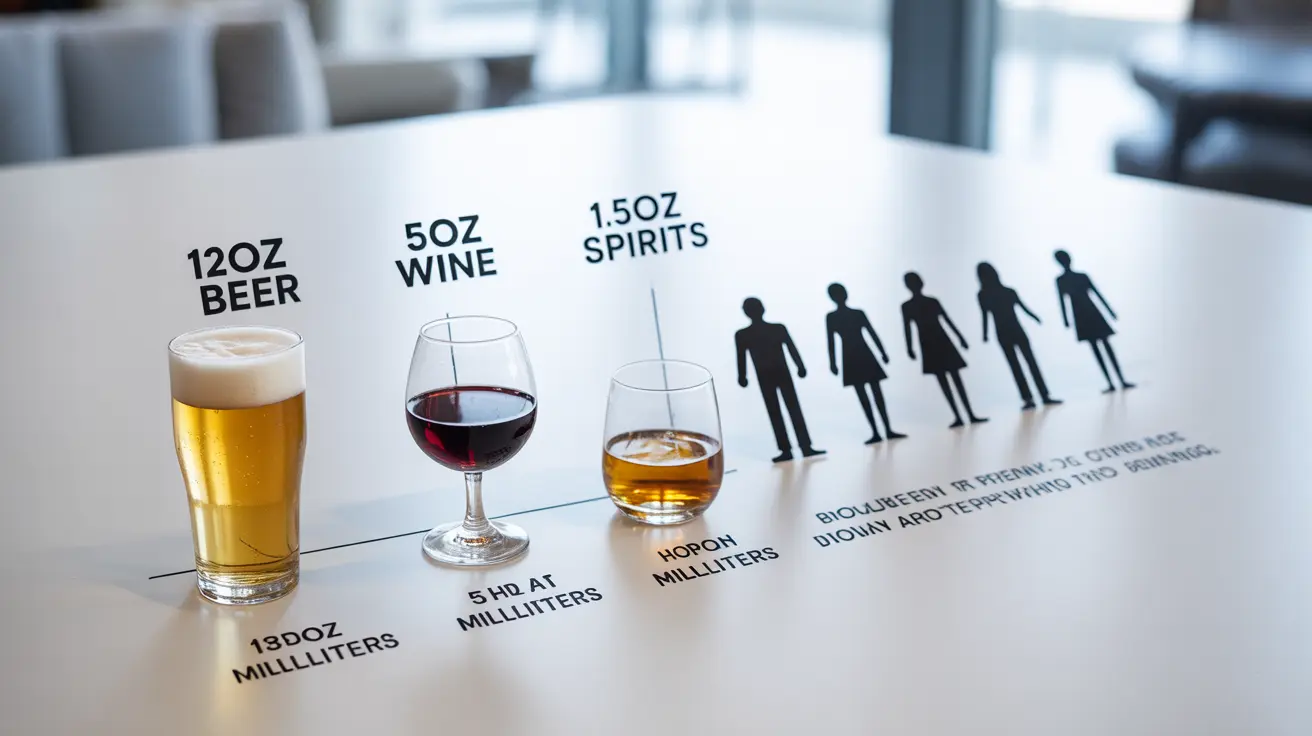Understanding how many drinks it takes to feel intoxicated is crucial for making responsible decisions about alcohol consumption. While there's no universal answer that applies to everyone, several key factors influence how quickly and intensely alcohol affects different individuals.
This comprehensive guide explores the science behind alcohol intoxication, helping you understand standard drink measurements, individual tolerance factors, and important safety considerations.
Understanding Standard Drink Measurements
A standard drink in the United States contains approximately 14 grams of pure alcohol. This typically equals:
- 12 ounces of regular beer (5% alcohol)
- 5 ounces of wine (12% alcohol)
- 1.5 ounces of distilled spirits (40% alcohol)
Understanding these measurements is essential because many beverages, especially craft beers or cocktails, may contain more alcohol than a standard drink, affecting how quickly intoxication occurs.
Key Factors Affecting Alcohol Tolerance
Body Weight and Composition
Your body weight and composition significantly influence how alcohol affects you. Generally, larger individuals require more alcohol to reach intoxication compared to smaller people. Body fat percentage also matters, as alcohol distributes differently in fatty tissue versus lean muscle mass.
Gender Differences
Biological differences between males and females affect alcohol processing. Women typically become intoxicated more quickly than men of similar weight due to differences in body composition and enzyme levels that break down alcohol.
Food and Hydration Status
Eating before or while drinking significantly impacts alcohol absorption. Food helps slow alcohol absorption into the bloodstream, while drinking on an empty stomach can lead to faster intoxication.
Average Intoxication Guidelines
While individual responses vary considerably, general guidelines suggest:
- For women: 2-3 drinks within two hours may lead to noticeable impairment
- For men: 3-4 drinks within two hours may result in intoxication
- Blood Alcohol Content (BAC) of 0.08% (legal driving limit) typically occurs after:
- 4 drinks for women
- 5 drinks for men
- (consumed within two hours)
Safe Drinking Practices
To maintain control and avoid dangerous levels of intoxication:
- Limit drinking to one standard drink per hour
- Alternate alcoholic beverages with water
- Never drink on an empty stomach
- Set a predetermined drink limit before social occasions
- Always arrange safe transportation if planning to drink
Frequently Asked Questions
How many standard drinks does it usually take for an average person to feel drunk?
For most adults, noticeable effects begin after 2-3 standard drinks within a two-hour period. However, this varies significantly based on individual factors like weight, gender, and tolerance level.
What factors affect how quickly someone gets drunk after drinking alcohol?
Key factors include body weight, gender, food consumption, metabolism rate, overall health, medications, drinking speed, and individual tolerance levels developed over time.
How is a standard drink defined and why does drink size or type matter?
A standard drink contains 14 grams of pure alcohol. Drink size and type matter because alcohol content varies significantly between beverages, affecting how quickly intoxication occurs.
What are safe drinking limits to avoid getting drunk or intoxicated?
Safe drinking limits generally recommend no more than one standard drink per hour, staying within daily limits of 1-2 drinks for women and 2-3 drinks for men, and never exceeding 4 drinks on any occasion.
How does drinking on an empty stomach impact how many drinks it takes to get drunk?
Drinking on an empty stomach significantly accelerates alcohol absorption, potentially leading to intoxication with 1-2 fewer drinks than usual. Food helps slow alcohol absorption by up to 50%.




